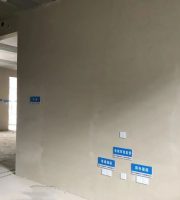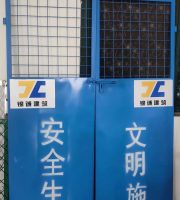This method has obtained an invention patent (Patent No.: 200310101954.3).
Patent Certificate for Rear Inserted Reinforcement Cage Technology This technology won the third prize of the 2005 Huaxia Science and Technology Award This technology has been applied in BOE projects.
.
This technology is based on the long spiral drilling pumping concrete pile foundation, through the reinforcement cage guide pipe and the upper vibration hammer, the excitation force is transmitted to the bottom of the reinforcement cage, and the reinforcement cage is lowered to the design elevation through the downward tension to form a reinforced concrete cast-in-place pile.

Technical features: Wide applicability, higher bearing capacity than underwater cast-in-place piles: The construction technology of inserting reinforcement cage after pumping concrete into piles by long spiral drilling is applicable to geological conditions such as filling, cohesive soil, silt, sandy gravel soil, muddy soil, etc.
Compared with traditional slurry protected cast-in-situ piles, the construction speed can be increased by 4-5 times.
After inserting reinforcement cages, it can be carried out crosswise, with fewer procedures, convenient pile forming, and high construction efficiency.
● High construction efficiency: This process uses long spiral drilling to pump concrete, and the hole forming and pile forming of concrete plain piles are completed at one time.
The bearing capacity of a single pile is more than 20% higher than that of underwater cast-in-situ piles under the same conditions.
This construction method has low noise, high efficiency, low cost, and no mud pollution, and has broad market prospects.
Under the same conditions, the cost of pile formation is only about 70% of that of slurry protected cast-in-situ piles.
● Low cost: Compared to traditional slurry protected cast-in-situ piles, this process does not require slurry protection, saving costs for slurry production and treatment, and achieving high construction efficiency.





